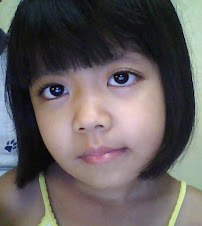 If you’re considering an entry-level Nikon D.S.L.R., you might want to aim higher. The company has just announced the D5000, a model that bridges the gap between its popular D60 and D90 models by offering features like high-definition video capture, a larger sensor, an 11-point auto-focus, and Live View at a reasonable price of $849.
If you’re considering an entry-level Nikon D.S.L.R., you might want to aim higher. The company has just announced the D5000, a model that bridges the gap between its popular D60 and D90 models by offering features like high-definition video capture, a larger sensor, an 11-point auto-focus, and Live View at a reasonable price of $849.Those familiar with Nikon’s naming conventions will note the new four-digit numeric range. “The D5000 name is intentionally designed to set the camera apart,” says Steve B. Heiner, a senior technical manager for Nikon. “It’s not necessarily an entry-level D.S.L.R.—the price is a bit higher, and the features are more advanced. But even the most beginner photographer can use it and, at the same time, it’s also great for an advanced amateur.”
The D5000 will be sold as a kit with an 18mm to 55mm (equivalent) f/3.5-5.6G VR lens for $849. Nikon will also offer a two-lens kit that adds a 55mm to 200mm (equivalent) f/4-5.6 zoom lens for $1,100, or body-only for $729.
The D5000 is built upon the small chassis of the D60 (which costs approximately $600) but adds many of the finer attributes of the D90 (now selling for roughly $1,200, with lens). The 12.3-megapixel D5000 employs the same sensor as the D90, for instance, and it offers the same 11-point auto-focus system (the D60 has only three AF points). That means the D5000 will provide faster and more accurate auto-focus than the D60.
Perhaps the most attention-grabbing feature borrowed from the D90 is high-definition video capability. The D5000 can record video at 720p (1280×720 pixels at 24 frames per second), and video can be captured with image stabilization when using a Nikkor lens.
Unlike the D60, the D5000 includes Live View, which enables you to compose photos or video on the LCD (in addition to the viewfinder). The D5000’s Live View offers subject tracking auto-focus to automatically lock onto a moving subject. And its 2.7-inch swing-out LCD can be rotated and tilted for framing low- and high-angle shots—a feature that even the D90 doesn’t include.
The D5000 also packs a whopping 19 automatic scene modes (as compared with 5 on the D90) as well as several new in-camera editing features, including a soft filter effect to smooth out faces and a perspective control that enables users to correct distortions of up to 10 percent that often appear in architectural photographs.
And for geo-taggers, the D5000 is compatible with Nikon’s GP-1 GPS unit, which means you can add longitude and latitude data to images. (The GP-1 will set you back roughly $210, however.)
With features like these, why even consider the more expensive D90? “There are a couple of reasons,” says Heiner. “The D5000 cannot control multiple SpeedLights, and it lacks a depth-of-field preview capability, as well as the ability to accept an ancillary battery pack.”
Still, no matter how you look at it—either $350 less than the D90 or $250 more than the D60—the D5000 delivers the best of both models at a reasonable price. It’s definitely worth waiting a few weeks before you make a final buying decision.







No comments:
Post a Comment
Thanks for Stopping By, Hope You Enjoyed Yourself, Learned or Discovered Something, Thanks for the Comment! Have A Nice Day!